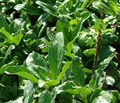
The Union Government told Parliament that although the area under cultivation of medicinal plants has decreased, the export value of the plants' products has increased in the last five years. The Union Ministry of AYUSH is implementing the ‘medicinal plants' portion of the NAM (National AYUSH Mission) scheme, which involves market-driven cultivation of priority medicinal plants in specified clusters/zones within select districts.
Support is provided under the scheme for the cultivation of priority medicinal plants on farmer's land, such as the development of nurseries with backward links for the production and supply of high-quality planting material, post-harvest management with forward links, primary processing, marketing infrastructure, and other related activities.
A subsidy of 30%, 50%, and 75% of the cultivation expense of specific plant species is given for the cultivation of 140 medicinal plants, respectively, under this scheme. While NAM funded the cultivation of medicinal plants on a total of 48,040 hectares from 2015-16 to 2019-20, only about a quarter of that was achieved in 2016-17.
The scheme's cultivation area increased from 8509.91 hectares in 2015-16 to 12462.249 hectares in 2016-17. In 2017-18, the area was 10328.52 hectares, but in 2019-20, it was 6794.12 hectares.
In 2016-17, Uttar Pradesh, Madhya Pradesh, and Andhra Pradesh took the lead in taking medicinal plant cultivation to 1898 hectares, 2518 hectares, and 1513.2645 hectares, respectively.
In fact, UP was accounted for more than two-thirds of the country's total medicinal plant area in 2018-19. The region covered by UP was 3633.44 hectares out of a total of 9945.47 hectares that year. Surprisingly, UP's share in 2019-20 was nil, with no clarification given in the reply for the same.
West Bengal, which started introducing the scheme in 2015-16 with 107 hectares, gradually increased the area under cultivation to 748.38 hectares in 2019-20.
However, even with a decrease in export rate and a decline in area under the NAM system, the value of exported commodities has increased over the five years from 2015-16 to 2019-20. In 2015-16, India exported 15,971.307 tonnes of herbs under ITC HS codes 1211, according to the Centre's response.
In 2019-20, this was reduced to 10,797.243 tonnes. Exports, on the other hand, rose in value from $23.25 million in 2015-16 to $26.69 million in 2019-20. The response included information on a number of ITC HS codes, beginning with 1211.
Chirata (ITC HS code 12119091) exports decreased from 25.25 tonnes in 2015-16 to 4.6 tonnes in 2019-20. During the same time span, the volume of exports decreased from $22,187 to $12,427.
Tukmaria (ITC HS code 12119092) exports increased from 730.83 tonnes in 2015-16 to 968.63 tonnes in 2019-20, but the value of exports decreased from $89,304 to $68,626.
In the last five years, the government has provided financial assistance to farmers across the country in the form of subsidy for 140 identified medicinal plants under the NAM scheme, totaling Rs 191.64 crore.
During these five years, the scheme gained AP ($12.40 crore), MP ($21.04 crore), UP ($24.09 crore), West Bengal ($11.34 crore), and Tamil Nadu ($11.04 crore).











